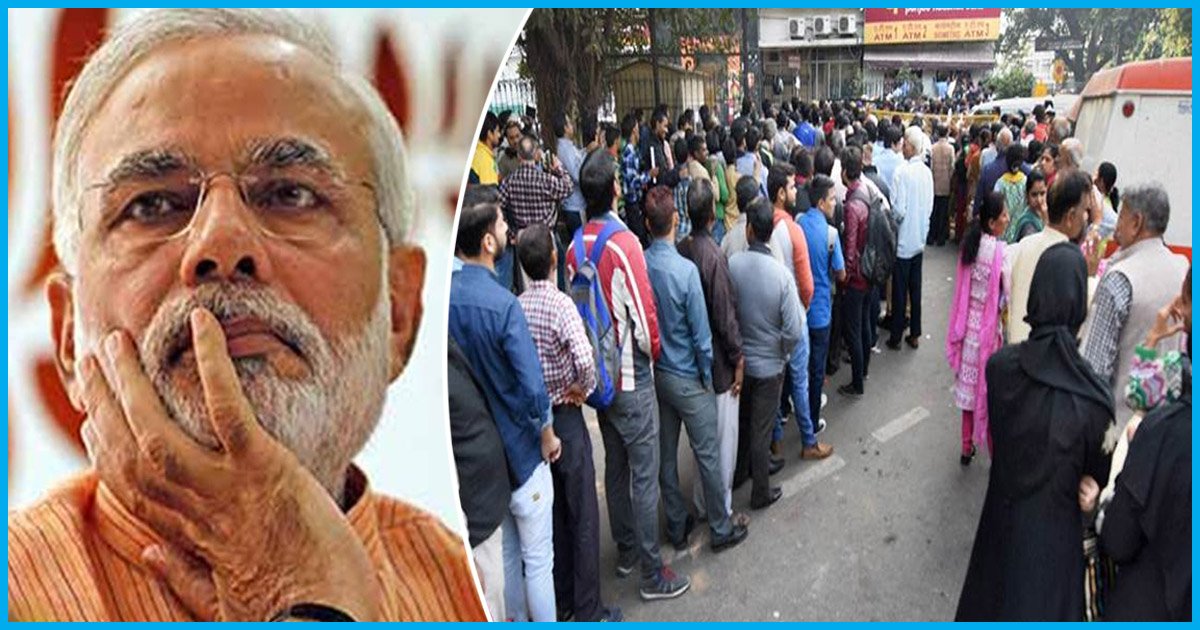
India Loses Tag Of Fastest-Growing Major Economy: Growth Slows To Lowest Point In Over Two Years
1 Jun 2017 11:59 AM GMT
Editor : Sudhanva Shetty Shetty
Writer, coffee-addict, likes folk music & long walks in the rain. Firmly believes that there's nothing more important in a democracy than a well-informed electorate.
Succumbing to the effects of demonetisation, India’s quarterly GDP growth has reached its lowest point since December 2014, with growth slackening to 6.1% for the January-March (Q4) quarter.
This number, released by the government on Wednesday, 31 May, was considerably lower than even the most modest predictions by economists and think tanks. While the Reuters prediction was 6.5%, the median forecast of 36 analysts was for a year-on-year growth of 7.1%.
This marks the fourth consecutive quarter where India’s economic growth has slowed. At the same time, other economic parameters like real gross value added (GVA), private consumption, and investment demand have also fallen.
Meanwhile, China clocked a growth of 6.9% for the same period, thereby taking from India the tag of fastest growing major economy in the world.

Infrastructure growth slackens too
The growth of eight core sectors has also declined – from 8.7% to 2.5%.
These eight infrastructure sectors are coal, crude oil, natural gas, refinery products, fertilisers, steel, cement, and electricity. Their growth rate was 8.7% in April last year. Now, as per the government data released on Wednesday, coal, crude oil and cement production recorded negative growth of 3.8%, 0.6% and 3.7%, respectively.
The effect of demonetisation
The “shocking” slowdown has been attributed to the central government’s move to demonetise the Rs 500 and Rs 1,000 notes on 8 November 2016, invalidating 86% of India’s currency. The move caused a massive cash crunch and disrupted the economy and day-to-day business, hitting the unorganised sector the hardest.
Prime Minister Narendra Modi declared that the move was to curb black money and terror funding. Seven months after the demonetisation move, however, terrorism continues, with the unrest in Kashmir escalating and Naxals continuing to carry out attacks on security personnel. Meanwhile, according to the United Nations, demonetisation did not impede the flow of black money, thereby raising questions on the economic sense behind the massive move, which ignited chaos, long queues, rural economic breakdown, and took the lives of over 100 citizens. (Read The Logical Indian’s analysis of the impacts of demonetisation on its six-month anniversary here.)

The mystery of the Q3 GDP numbers
Economists predicted that India’s GDP figures for October-December 2016 would be negatively affected by demonetisation. But India defied expectations and eluded top economists to retain the title of the world’s fastest-growing major economy – Q3 GDP growth was revealed to be 7%. This was lower than the 7.4% of the previous quarter but higher than the 6.4% forecast by economists.
The October-December numbers seemed too good to be true; many commentators criticised the government’s methodology of GDP calculation without taking into account the effect of demonetisation on the unorganised sectors. (More here.)
Doubt over India’s GDP numbers is not a new phenomenon; India’s recent GDP calculations have been criticised for hyping the actual numbers. The numbers have a history of discrepancies, with even the Chief Statistician of India admitting that the numbers can be faulty.
A day after the 2017 Q3 numbers were made public, a Nomura report declared, “This does not add up. High-frequency real activity data released since demonetisation suggests that consumption and services were hit after demonetisation because they are more cash-intensive … In our view, official GDP statistics are significantly underestimating the growth impact of demonetisation.” The report cast doubt on the 7% figure, citing three reasons:
- the inability of official statistics to capture the negative growth effects on the unorganised sectors, as the official numbers are based largely on organised sector data;
- the GDP growth estimate for Q4 2015 was also revised lower by 0.8 percentage points to 6.5% from 7.2%, thereby creating a large favourable base effect for comparison;
- if companies showed their cash in hand (after demonetization) as sales, then this may be getting captured as a higher value addition in these specific sectors.
The government, on the other hand, claimed that the 7% growth figure vindicated demonetisation and criticised economists and the media. Prime Minister Modi notably mocked Nobel laureate Amartya Sen when he told an election rally Uttar Pradesh, “On the one hand are those who talk of what people at Harvard say and on the other hand is a poor man’s son who through his hard work is trying to improve the economy.”
Now, with the Q4 numbers in, the effects of demonetisation seem to have finally caught up.
Conclusion
While Wednesday’s projections are expected to be a major topic of discussion for the Reserve Bank of India (RBI), whose monetary policy committee meets next week, the general expectation is that the central bank will keep interest rates unchanged.
Credit rating agency Moody’s has projected India’s economy to grow at 7.5% in 2017-18 and 7.7% in 2018-19. Meanwhile, the World Bank expects the Indian economy to grow at 7.2% in FY18 and gradually gather pace to touch 7.7% by FY20.
Whether these numbers will be met depends on the handling of the economy by the government, and in particular on how the government will limit the negative consequences of demonetisation.
Read more
- Indian Govt. Announces 7% GDP Growth, Confuses Bankers & Economists In India & Around The World
- Reality Check: India Is Portraying Its GDP At 7.9% But Figures Don’t Match
- GDP Calculation Is Faulty Admits The Chief Statistician Of India
- “GDP Is Overstated,” Says Morgan Stanley’s Chief Global Strategist Ruchir Sharma
 All section
All section













